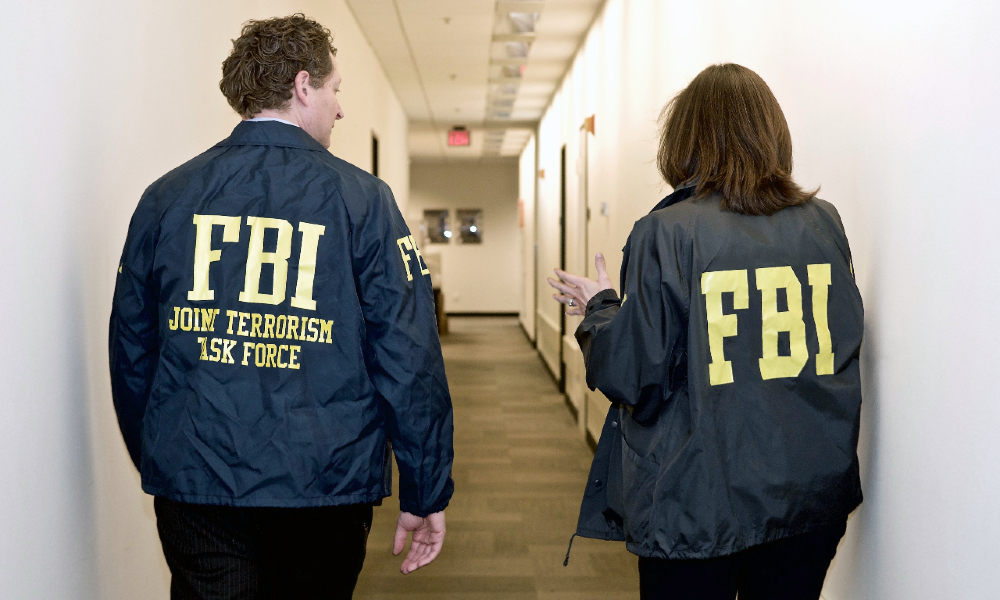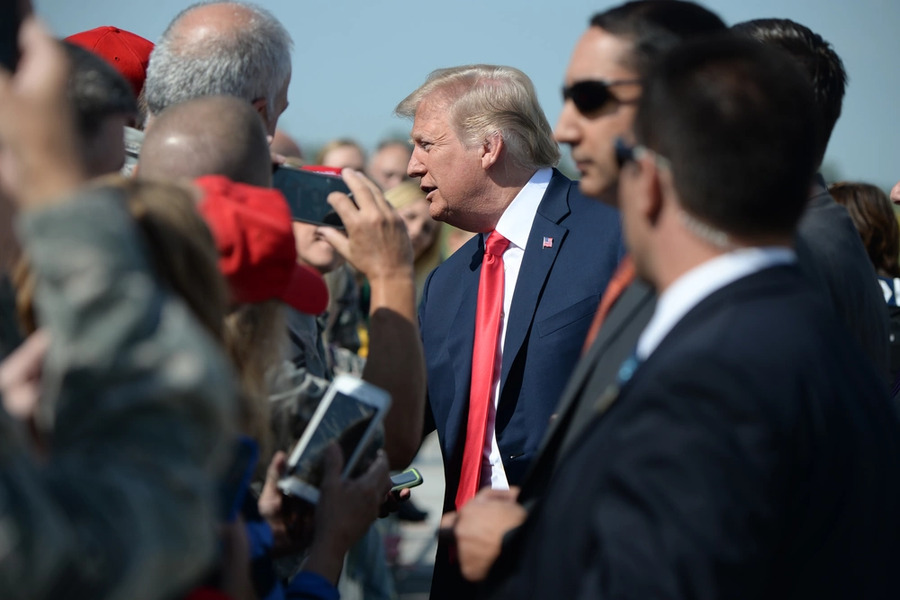New Evidence of Secret International Agreements
Previously unreported data about 61international agreements raise questions about the use of secrecy in U.S. foreign relations.

Published by The Lawfare Institute
in Cooperation With

Recent years have seen renewed interest in the topic of secret international agreements. Some commentators have theorized about the practical merits of these agreements. Others have explored their history and status under international law. Still others have written about them from the perspective of U.S. foreign relations law. But there is a common problem: the secrecy itself. Without details about the things that are secret, it is challenging to say anything definitive about their implications or legality. In this context, I used the Freedom of Information Act (FOIA) to seek evidence of secret agreements from the State Department—and uncovered new, previously unreported data about 61 agreements.
First, some background: Since 1950, federal law has required the State Department to publish an official compilation titled United States Treaties and Other International Agreements (UST). The law generally mandates that UST include the text of “all treaties” and “all international agreements other than treaties” to which the United States is a party. But UST has never served as a truly comprehensive collection of these authorities. Part of the reason lies in 1 U.S.C. § 112a(b), which provides that the secretary of state may withhold from publication certain categories of agreements that are not Article II treaties as long as the “public interest ... is insufficient to justify their publication.”
Why would the public interest ever be insufficient? The statute lists four possible reasons:
(A) as of the date of enactment of the Foreign Relations Authorization Act, Fiscal Years 1994 and 1995, the agreements are no longer in force;
(B) the agreements do not create private rights or duties, or establish standards intended to govern government action in the treatment of private individuals;
(C) in view of the limited or specialized nature of the public interest in such agreements, such interest can adequately be satisfied by an alternative means; or
(D) the public disclosure of the text of the agreement would, in the opinion of the President, be prejudicial to the national security of the United States.
Even while serving as grounds for withholding from publication, most of these reasons don’t require secrecy—the statute provides that the State Department will, upon request, make available copies of any agreement kept out of UST on the basis of (A), (B) or (C). In contrast, agreements withheld under (D)—i.e., those that have received a national security classification—are both unpublished and unavailable. In this way, classification imposes a uniquely robust barrier to public understanding.
It is true that certain fragments of evidence exist in open sources: A 2001 Senate Foreign Relations Committee Print indicates that at least 9 percent of nontreaty agreements transmitted to Congress from 1978 to 1999 were classified. Based on an interview with Senate Foreign Relations Committee staff, Oona Hathaway reported in 2009 that “[b]etween five and fifteen percent of current executive agreements are classified as secret.” And in 2016, Elizabeth Goitein used FOIA to reveal that the executive branch entered a minimum of 807 unpublished agreements—both classified and unclassified—from 2004 through 2014.
But there are still many unknowns. We don’t know how often the United States has entered classified agreements since 2009, the degree to which this form of secrecy has ebbed and flowed across administrations, whether recent practice is in line with historical norms, or the relative frequency with which the State Department relies on each of the various statutory grounds to block publication. Nor do we know much about the content of classified agreements, the foreign parties who enter them or the federal agencies who oversee U.S. implementation.
At the same time, Section 112a(b) provides an opportunity for more transparency than scholars have managed to generate so far: While the statute clearly exempts the State Department from any obligation to publish the “text” of a classified agreement or provide “copies” to the public, the statute does not mandate the withholding of information about such an agreement’s nontextual characteristics. This raises the possibility that the State Department can disclose information on matters such as ratification dates and the identities of foreign counterparts, at least insofar as that information is itself unclassified.
Operating on this logic, I used FOIA to request any available information about agreements withheld from publication under Section 112a(b)(2)(D), including reports or other materials showing the annual number of agreements withheld since the date of the statute’s enactment in April 1994, the foreign parties to those agreements, and the general subject matter. The State Department largely granted this request and delivered a table with information about classified agreements entered from 1994 through February 2018. This table still leaves many questions unanswered, but it also sheds new light on the practice of secret agreement-making across recent decades.
What does it show?
First, the table discloses the existence of 61 classified agreements. This number almost certainly represents only a portion of the total number executed during the reporting period. One reason is that the State Department (understandably) declined to provide information about agreements whose very existence is classified. A second reason is that, as Curtis Bradley and Jack Goldsmith have explained, “the executive branch has not organized itself internally to ensure that all agreements are deposited in a central location in the State Department.” The Case Act requires any administrative agency that enters into an international agreement to transmit the text to the State Department within 20 days, but Bradley and Goldsmith have suggested that agencies “often” violate this requirement. The combined effect of these conditions is that the FOIA results are likely to represent, at most, the number of international agreements whose contents are classified but whose existence is both unclassified and currently known to the State Department. Depending on the commonality of existence-classified agreements and the extent of agency noncompliance with the Case Act, the results could represent only a tiny sliver of all classified agreements concluded from 1994 to 2018. But even so, the fact that the State Department managed to disclose 61 agreements despite significant legal and practical limits on transparency signals that the United States continues to enter into classified agreements with considerable frequency.
When viewed together with the results of other research, this number also provides additional insight on the relative frequency with which the State Department withholds agreements from publication on the grounds of national security. As explained above, Goitein’s study established that from 2004 through 2014 the executive branch entered a minimum of 807 unpublished agreements. National security classification, however, is only one of several bases for withholding under Section 112a(b)(2), so it was unclear how many of the 807 were unpublished for that reason. In contrast, the new FOIA data establish that at least nine agreements were withheld from publication due to classification for the period covered by Goitein’s study. This means that secrecy operated as the basis for the withholding of at least 1 percent of the unpublished agreements that were adopted from 2004 through 2014. Presumably the actual percentage is much higher, but it is impossible to say how much.
Second, the table shows that a majority of the agreements were concluded in the 1990s, as indicated in Figure 1. At first glance, this might seem to suggest that the United States has moved toward greater transparency in recent years. It is unclear and even doubtful, however, that the reported pattern is representative. Indeed, Christopher Kutz has suggested that the number of classified agreements rose with the advent of the war on terror, which is precisely when the disclosed number of agreements drops to zero. One might thus surmise that the drop reflects not a decline in the number of classified agreements in the 2000s but rather a rise in the tendency to classify not only their contents but also their existence. In other words, the decrease in the disclosed number of agreements after the 1990s may very well reflect an increase in government secrecy.
Figure 1
Third, the table reveals that secret agreements have involved a significant and diverse collection of foreign governments. The countries that appear most frequently as parties are Israel (8), Japan (7), Bahrain (4), Norway (3), Oman (3), Thailand (3) and the United Kingdom (3). Other foreign partners include Bulgaria (2), Qatar (2), Romania (2), Saudi Arabia (2), Singapore (2), Turkey (2), the United Arab Emirates (2), Albania (1), Argentina (2), Brunei (1), Denmark (1), Egypt (1), Greece (1), Hungary (1), Poland (1), Slovenia (1), South Africa (1), South Korea (1), Spain (1) and Tunisia (1). Two agreements were multilateral. Middle Eastern governments are particularly common in the sample, as are governments with which the United States generally has amicable relations.
Unfortunately, it is once again uncertain whether these patterns are representative. On the one hand, secret agreements with friendly governments may be more common than secret agreements with hostile governments, given that cooperation between the United States and its allies tends to be comparatively extensive. On the other hand, the numbers may overrepresent friendly governments if the United States is more likely to classify the existence of agreements with governments that are hostile. Such a tendency might exist if agreements with adversaries are more politically sensitive or more likely to involve regimes that oppose transparency.
Finally, the disclosed agreements exhibit a clear tendency in terms of subject matter. As shown in Figure 2, 95 percent of them concern defense, while a mere 3 percent pertain to finance and 2 percent address nonproliferation. This pattern could represent the general norm, given the sensitivity of national defense in comparison to other topics. And while “defense” is quite vague as a category, it is possible to draw some inferences about its content. In particular, because I only requested information about agreements withheld from publication under Section 112a(b)(2)(D), we can reasonably infer that the 95 percent do not include two types of defense agreements that federal regulations place outside the ambit of that provision: “bilateral agreements that apply to specified military exercises” and “bilateral military personnel exchange agreements.” Stated in the affirmative, the disclosed defense agreements are likely to cover defense topics other than exercises and personnel exchanges—anything from materiel transfers; to the execution of military operations; to access to facilities, bases, infrastructure or airspace, among other possibilities.
Figure 2
These findings underscore long-standing questions about U.S. compliance with Article 102(1) of the U.N. Charter, which provides that “[e]very treaty and every international agreement entered into by any Member of the United Nations ... shall as soon as possible be registered with the Secretariat and published by it.” None of the 61 agreements is registered with the Secretariat. And while Article 102(1) does not require immediate registration, the United States concluded a clear majority of these agreements more than two decades ago. This fact raises concerns about whether recent presidential administrations have made efforts to register “as soon as possible.” In this way, there seems to be a strong argument that the United States is failing to meet its obligations under the plain language of the U.N. Charter.
It is doubtful, however, that serious consequences should follow under international law. Many states have agreements that are not registered under Article 102. One estimate puts the global rate of registration at approximately 50 percent of all international agreements. In these circumstances, it would be hypocritical of foreign governments to denounce U.S. practice, especially given that, as Megan Donaldson explained recently, the United States is “orders of magnitude ahead of other states in terms of the number of treaties submitted.” In addition, the prescribed consequence for noncompliance with Article 102 is not particularly severe—the U.N. Charter establishes merely that a party cannot invoke an unregistered agreement before an organ of the United Nations. This means that the United States is currently ineligible to make use of any of the 61 agreements before organs such as the International Court of Justice (ICJ) and the Security Council. But the United States may not seek to invoke the agreements in those settings anyway, and even if it does, the ICJ has not demanded strict adherence to the publication requirement.
As a result, the FOIA results are significant primarily for other reasons. One is that major media outlets seem to have overlooked most of the 61 agreements. The New York Times, for example, does not appear to have reported on the 2017 defense agreement with Oman or the 2018 agreement with Egypt. The new evidence thus helps to fill in gaps in the history of U.S. foreign relations and the various bilateral relationships that are implicated.
The findings are also significant because researchers may be able to use them along with other public sources to triangulate more specific conclusions about the agreements’ content. For instance, the table shows that the United States entered into a nonproliferation agreement with South Africa in 1994. This occurred shortly after South Africa gave up its nuclear weapons program in the early 1990s, raising the distinct possibility that the two events are related.
Even where such triangulation is not possible, the findings are noteworthy simply for the questions they raise: What did the 2015 defense agreement with Greece address? What legal arrangements did the United States and Qatar make in 2017? What has the United States established in its eight (or more) classified agreements with Israel? The answers are of obvious interest to journalists, historians and political scientists.
Finally, the findings are important because they highlight an ongoing need for public and official scrutiny of the substantial opacity of international lawmaking on the part of the executive branch. Ashley Deeks has argued that secrecy is not always an unqualified evil—despite its negative connotations, classification can help to facilitate transparency and trust between contracting states, effectuate certain norms embraced by the U.N. Charter and respect the sovereign choices of foreign counterparts. But as Deeks readily acknowledges, secrecy can also facilitate illegal conduct, foster miscalculation among third parties, and shield from scrutiny arrangements that the public would otherwise oppose. These disparate possibilities suggest that public concern, accountability mechanisms within the executive branch, and vigilance from Congress are necessary to ensure the appropriate use of secrecy in U.S. foreign relations.





